Omphalotus olearius (DC) Sing.
Phylum: Basidiomycota - Class: Agaricomycetes - Order: Agaricales - Family: Marasmiaceae
Distribution - Taxonomic History - Etymology - Identification - Toxicity - Reference Sources
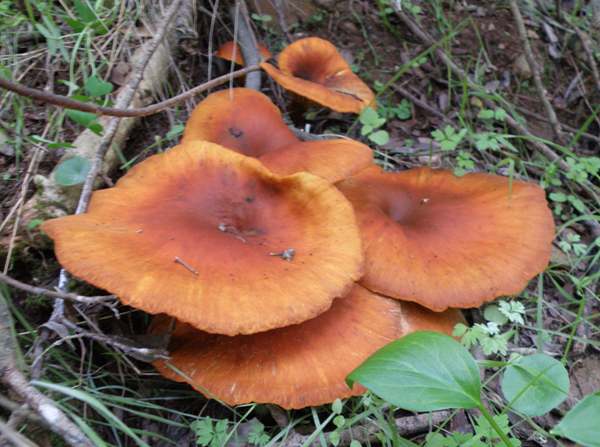
Omphalotus olearius is a brilliant orange mushroom that usually grows in dense tufts from the decaying underground roots of olive trees. Macroscopically it is very similar to Jack o' Lantern Omphalotus illudens. It's dual claim to fame is that it is a poisonous mushroom whose gills are bioluminescent. (A few gilled mushrooms and several other kinds of fungi are known to emit light. In a very dark environment, when your eyes have had time to adjust, the gills of this mushroom may be seen glowing a ghostly green colour.)
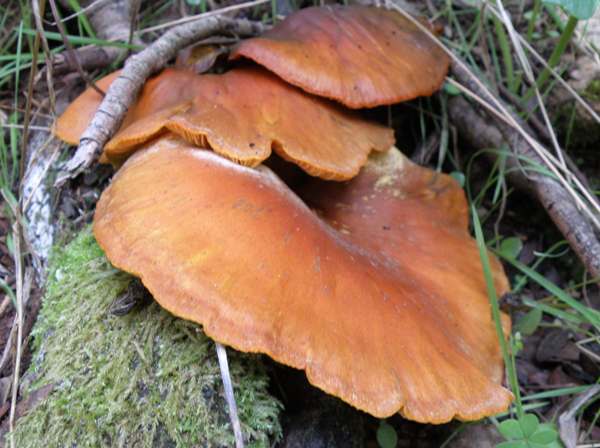
The pictures shown above were taken on the border of Spain and Portugal near to Azinhal; the picture below was taken in southern France.
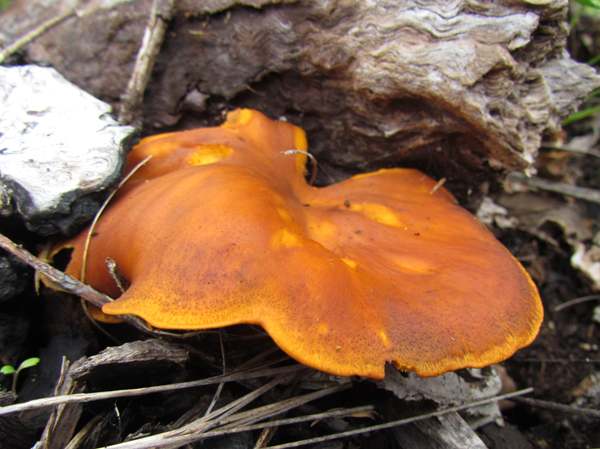
Distribution
Although occasionally reported from Britain, this species is not (yet) authenticated as a British species in the British Mycological Society's Checklist of Fungi of the British Isles. Omphalotus olearius is an uncommon but far from rare find in southern Europe, including southern France, Spain, Portugal and other Mediterranean countries.
Taxonomic history
This saprobic mushroom was described in 1815 by Augustin Pyramis De Candolle, who gave it the binomial scientific name Agaricus olearius. (Most gilled fungi were initially placed in a giant Agaricus genus, now mostly redistributed across many other newer genera.) The currently accepted scientific name Omphalotus olearius dates from a 1946 publication by the German-born mycologist Rolf Singer.
Synonyms of Omphalotus olearius include Agaricus olearius DC.
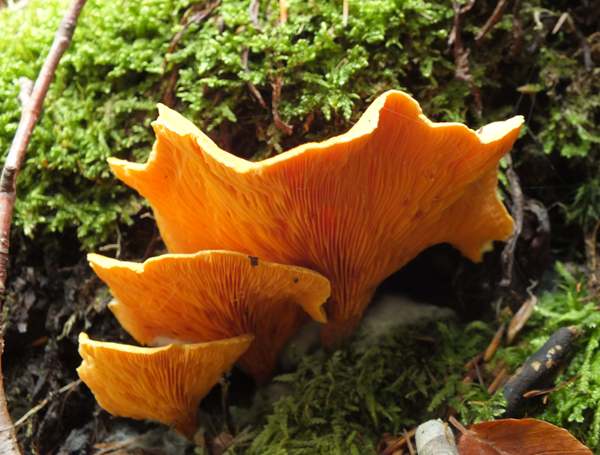
Etymology
The genus name Omphalotus means umbilicate (in the form of a navel), and refers to the central depression in mature caps, as seen in the picture above. You may be pleased to know that the specific epithet olearius is not a reference to Ryanair's chief executive Michael O'Leary or to any other member of the O'Leary clan; olearius means 'of the olive tree' - and indeed it is with olive trees that this saprobic mushroom is nearly always associated, at least in southern Europe.
Confusingly, some people refer to this mushroom as Jack o' Lantern - a common name it therefore must share with Omphalotus illudens with which it was considered conspecific until recent studies convinced most authorities that although macroscopically inseparable the two are indeed quite distinct species.
Toxicity
This and other members of the genus Omphalotus are seriously poisonous toadstools that contain the toxin muscarine; when eaten they cause gastric upsets that can last for several days. Poisoning by this species is not usually fatal, but great care must be taken when gathering edible orange-coloured mushrooms such as Chanterelles to avoid accidentally including this species. (Even more dangerous is the superficially similar Cortinarius rubellus, which has been responsible for many deaths.)
Identification guide
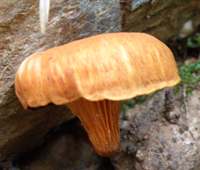 |
Cap7 to 20cm across; initially convex with an inrolled margin, flattening and eventually developing an upturned wavy margin; smooth; bright orange to yellowish orange. |
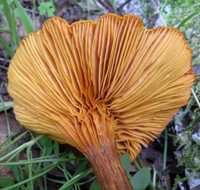 |
GillsDecurrent; non-forking; colour as cap. Stem4 to 14cm long and 1 to 2.5cm diameter, smooth, tapering towards the base; orange, darkening towards the base. |
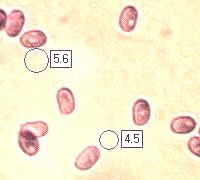 |
SporesEllipsoidal to globose, smooth, 5-7 x 4.5-6.5µm. Spore printCreamy white. |
Odour/taste |
Odour quite strong but pleasant; taste not distinctive. |
Habitat & Ecological role |
Saprobic, mainly under olive trees in southern Europe. |
Season |
September through to January in southern Europe. |
Similar species |
Hygrophoropsis aurantiaca has forked gills and does not form caespitose clusters. |
Reference Sources
Fascinated by Fungi, 2nd Edition, Pat O'Reilly 2016, reprinted by Coch-y-bonddu Books in 2022.
Dictionary of the Fungi; Paul M. Kirk, Paul F. Cannon, David W. Minter and J. A. Stalpers; CABI, 2008
Taxonomic history and synonym information on these pages is drawn from many sources but in particular from the British Mycological Society's GB Checklist of Fungi.
Fascinated by Fungi. Back by popular demand, Pat O'Reilly's best-selling 450-page hardback book is available now. The latest second edition was republished with a sparkling new cover design in September 2022 by Coch-y-Bonddu Books. Full details and copies are available from the publisher's online bookshop...

